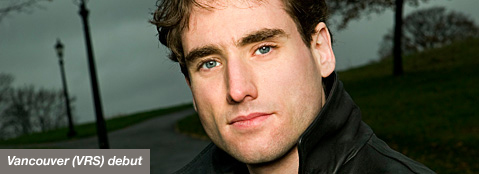Category: Blog
-

AUDRA MCDONALD WOWS AUDIENCES AND CRITICS
The long-awaited American Repertory Theater production of The Gershwins’ Porgy and Bess has opened and the reviews are coming in. The critics are unanimous in their praise for Audra McDonald, who has set a new standard for this iconic leading lady of American opera. “Ms. McDonald is Bess (or to use the hyperbolic speech of…
-

GETTING TO KNOW: BORIS GILTBURG
“The best about being the musician is that you get to experience that magical atmosphere…. created between the music, you and the audience…” Boris Giltburg Who: 26-year-old Russian residing in Israel First teacher: mother Debut: age seven Hobbies: languages and computer programming Biggest inspiration: “classical music in its entirety – I learn and experience a…
-

TREASURING TRANSFORMATIONS
Responding to a request for your “most memorable cultural experience, anywhere, anytime,” it didn’t come as any surprise that our readers are cultural omnivores with wide-ranging interests and experiences. It was no more surprising that many of the respondents recognized the near impossibility of reducing a lifetime of cultural experiences and interests into a short,…
-

FOR YOUR VIEWING PLEASURE
It seems only appropriate to highlight the dynamic skills of Kirill Gerstein in a performance of Rachmaninoff’s 3rd Piano Concerto with the Simon Bolivar Youth Symphony Orchestra and conductor Gustavo Dudamel. And while we are considering virtuoso performances, we could not resist offering two encore performances by George Li (Playhouse, Sunday, December 4). We have uploaded…
-

SERVING UP VIRTUOSITY
I read with interest a New York Times article (found here) about the plethora of virtuosi currently found on the concert stages. According to the author, Anthony Tommasini, there are perhaps more technically gifted pianists now than at any other time. Compositions that were once the exclusive domain of the rare pianists are now commonplace…
-

FOR YOUR VIEWING PLEASURE
Maxim Rysanov describes how he was introduced to the viola. It didn’t take long for this “prince among violists” to achieve success and acclaim. In September 2010 he performed Tchaikovsky’s Rococo Variations at the Last Night of the Proms with conductor Jiri Belohlavek and the BBC Symphony Orchestra. Maxim Rysanov performs at Kay Meek Centre on Sunday, October 16.
-

ALFRED BRENDEL RETURNS TO VANCOUVER
I had the privilege of presenting Alfred Brendel three times during the past ten years and each experience was memorable for a myriad of different reasons. The first time he came to Vancouver, I remember distinctly sitting in a state of extreme nerves at YVR waiting for his plane to arrive. I so desperately wanted to…
-

VRS SURPRISE GIFT CONCERT
Four years ago the Vancouver Recital Society launched a new venture – an annual ‘surprise gift concert’. The concerts have been held in the intimate and acoustically superb Telus Theatre in the Chan Centre for the Performing Arts. It is one of Vancouver’s most special venues for chamber music. As the person responsible for choosing…
-

GET WIND OF THIS…
I regularly receive e-newsletters from the Borletti-Buitoni Trust in London, and this most recent one contains a blog by Ramon Ortega Quero, the young Spanish oboist who will be gracing our stage at the Playhouse on Sunday, April 25. If you don’t already have a ticket to this amazing young musician’s concert, try to finish…
-

WHAT’S SO SPECIAL ABOUT ‘SPECIAL’?
Each season, as we prepare our new brochure, I stew over the concept of concerts we list therein as ‘special’ concerts. These so-called ‘special’ concerts are generally performed by artists who are well known, who will attract larger audiences (we always hope) and they are not part of any of our series concerts. What I…

